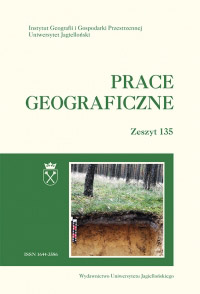Kationowa pojemność wymienna gleb na różnym podłożu geologicznym w Górach Stołowych
Cation exchange capacity of soils developed on various bedrock in the Stołowe Mountains
Author(s): Kamil Jezierski, Jarosław Waroszewski, Adam Bogacz, Beata Łabaz, Bernard Gałka, Cezary KabałaSubject(s): Cultural Essay, Political Essay, Societal Essay
Published by: Wydawnictwo Uniwersytetu Jagiellońskiego
Keywords: exchangeable cations; Cambisols; Podzols
Summary/Abstract: The effective cation exchange capacity in the surface layers of soils in the Stołowe Mountains reached mean values of 8–10 cmol(+) kg-1, of which up to 60% is exchangeable aluminum. The sum of base cations depends on the organic carbon content and particle-size distribution, related to the parent rock type. The largest sum is in soils derived from Cretaceous mudstones, followed by Permian sandstones and granite, whereas the smallest – from the Cretaceous sandstones. Among the soils derived from mudstones, Dystric Cambisols have the smallest base cation sum (2–2.5 cmol(+) kg-1), Luvisols have a two-fold higher and Eutric Cambisols – a three-fold higher one. The mean base saturation achieved 60% in Eutric Cambisols and 45% in Luvisols, while in Dystric Cambisols developed both from mudstones, Permian sandstones and granites it was on average 25% only. The sum of exchangeable base cations and base saturation in soils clearly differentiate the trophic status of forest habitats in the Stołowe Mountains, reflecting the interactions of geology and typological soil-forming processes.
Journal: Prace Geograficzne
- Issue Year: 2013
- Issue No: 135
- Page Range: 7-20
- Page Count: 14
- Language: Polish

